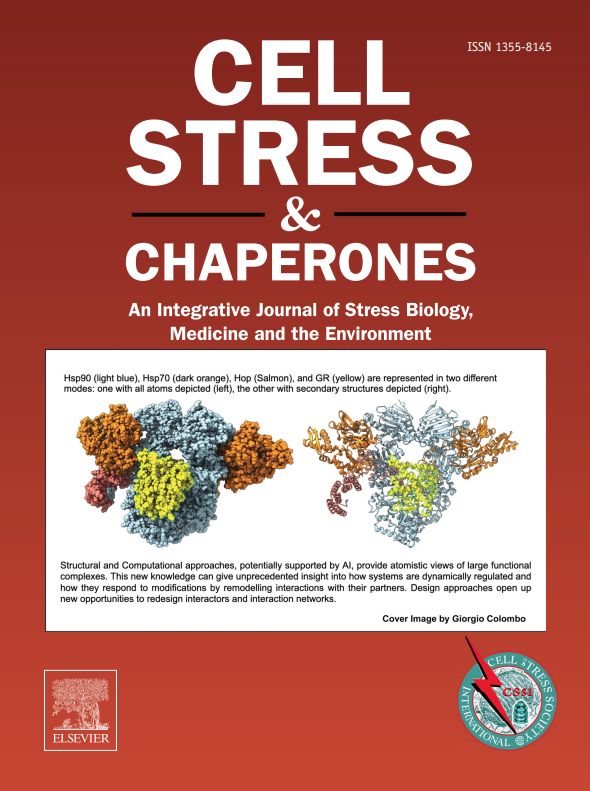In vivo imaging of heat shock protein 90: Diagnostic tool and support for Hsp90-targeted therapy
IF 3.2
3区 生物学
Q3 CELL BIOLOGY
引用次数: 0
Abstract
The molecular chaperone heat shock protein 90 (Hsp90), essential for protein homeostasis and cellular stress response, has emerged as a promising therapeutic target across various diseases, including cancer, neurodegenerative disorders, and inflammatory conditions. Although numerous Hsp90 inhibitors have been developed and extensively evaluated in clinical studies, progress has been impeded by limited clinical efficacy, narrow therapeutic windows, and challenges in assessing target engagement. These limitations highlight the importance of developing complementary noninvasive molecular imaging tools to better understand Hsp90 function in vivo and optimize therapeutic strategies, including assessing target engagement, refining dosing strategies, monitoring treatment response, and enabling patient stratification. This review provides a comprehensive overview of the current landscape of Hsp90-targeted molecular imaging. We discuss imaging modalities applicable to Hsp90, optical imaging, single-photon emission computed tomography, and positron emission tomography, and highlight key molecular probes developed to visualize Hsp90 expression and function in vivo using these modalities. Furthermore, we summarize significant findings that have deepened our fundamental understanding of Hsp90’s role in disease, supported the development of novel therapeutic approaches, demonstrated imaging effectiveness in preclinical models, and suggested potential for integration into clinical research. We also address current challenges and propose future directions for the field. Through this review, we aim to illustrate the translational potential of molecular imaging in advancing our understanding of Hsp90 in disease and optimizing Hsp90-targeted therapeutics, thereby contributing to precision medicine approaches.
热休克蛋白90的体内成像:热休克蛋白90靶向治疗的诊断工具和支持。
分子伴侣热休克蛋白90 (Hsp90)对蛋白质稳态和细胞应激反应至关重要,已成为多种疾病(包括癌症、神经退行性疾病和炎症)的有希望的治疗靶点。尽管已经开发了许多Hsp90抑制剂并在临床研究中进行了广泛的评估,但由于临床疗效有限、治疗窗口狭窄以及评估靶点参与的挑战,进展受到阻碍。这些局限性突出了开发互补的非侵入性分子成像工具的重要性,以更好地了解Hsp90在体内的功能并优化治疗策略,包括评估靶点参与、改进给药策略、监测治疗反应和实现患者分层。本文综述了目前hsp90靶向分子成像的全面概况。我们讨论了适用于Hsp90的成像方式、光学成像、单光子发射计算机断层扫描(SPECT)和正电子发射断层扫描(PET),并重点介绍了利用这些方式可视化Hsp90在体内表达和功能的关键分子探针。此外,我们总结了一些重要的发现,这些发现加深了我们对Hsp90在疾病中的作用的基本理解,支持了新的治疗方法的发展,在临床前模型中证明了成像的有效性,并提出了整合到临床研究中的潜力。我们还解决当前的挑战,并提出该领域的未来方向。通过这篇综述,我们旨在说明分子成像在促进我们对Hsp90在疾病中的理解和优化Hsp90靶向治疗方面的转化潜力,从而为精准医学方法做出贡献。
本文章由计算机程序翻译,如有差异,请以英文原文为准。
求助全文
约1分钟内获得全文
求助全文
来源期刊

Cell Stress & Chaperones
生物-细胞生物学
CiteScore
7.60
自引率
2.60%
发文量
59
审稿时长
6-12 weeks
期刊介绍:
Cell Stress and Chaperones is an integrative journal that bridges the gap between laboratory model systems and natural populations. The journal captures the eclectic spirit of the cellular stress response field in a single, concentrated source of current information. Major emphasis is placed on the effects of climate change on individual species in the natural environment and their capacity to adapt. This emphasis expands our focus on stress biology and medicine by linking climate change effects to research on cellular stress responses of animals, micro-organisms and plants.
 求助内容:
求助内容: 应助结果提醒方式:
应助结果提醒方式:


